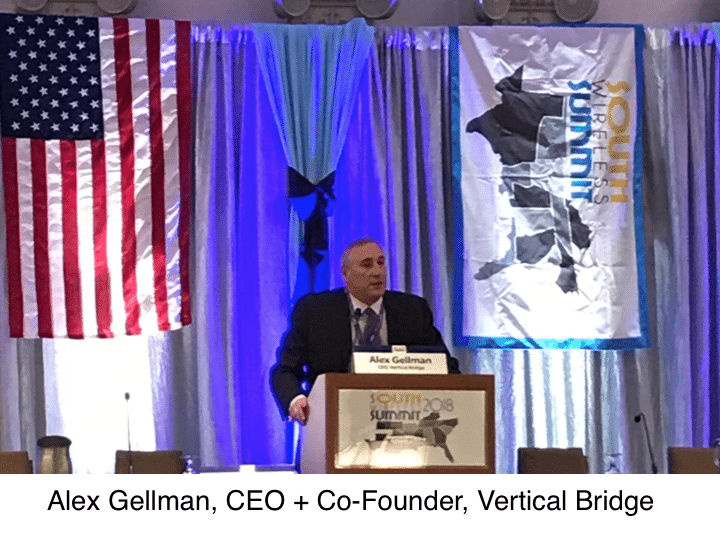
The robust mobile data growth in current and past years shows no signs of stopping. Gellman explained how the industry has been built on three major shifts to wireless beginning, with the telephone, followed by the internet and currently, video. Carriers have been able to monetize everything but video, which has implications as the U.S. moves towards 5G.
The good news? There’s been an uptick in carrier activity and the outlook is promising. Gellman described two faces of 5G; a fixed 5G, essentially cable replacement, and mobile 5G, the next evolution of mobile services and the successor to 4G, which Gellman anticipates being implemented around 2020.
“With 5G, the real business case for investment is going to be new revenue,” Gellman said.
The promise of 5G mobility is all of the things it enables, whether that be virtual reality, autonomous cars, smart cities and sensors, remote surgery or IoT applications.
Gellman also discussed what he calls the ‘wild card.’ “There’s a real potential for new entrants going forward,” which is an opportunity the industry hasn’t seen in years.
5G deployment will require changes to networks from core to edge. It will push carriers to spend money across all avenues of telecom via data centers, small cells, macro towers and fiber. Take for instance, Verizon’s investment in fiber buildout over the next five years. Tax reform is also “jet fuel on the fire for us,” says Gellman. Carriers are capital sensitive. The reform puts cash in their pockets and boosts CapEx. “It’s a public policy shift to incent investment, and wireless networks require investment.”
The 5G future is still somewhat fuzzy, but Gellman has some ideas about how it might play out. He doesn’t think autonomous vehicles will happen as fast as people anticipate; more likely to take ten years versus five years, “but it’s coming,” he said. He also believes carriers will, and have to, pull away from unlimited plans to monetize investments, but there will be what he describes as “flavors of unlimited” to choose from.
Gellman suggested that if carriers continue to push for regulatory changes on the basis of 5G rollout to rural and underserved areas, there may be set requirements to actually serve those areas. He feels international carriers will lead the way in terms of developing new revenue models for mobile 5G, particularly Europe and Asia, and that the pace of investment by U.S. carriers will be “directly proportional to the incremental revenues they can realize.” He feels that CBRS spectrum will turn into a ‘food fight’ because there are so many interested parties – carriers, cable companies and what Gellman refers to as the ‘FAANGS’ (Facebook, Amazon, Apple, Netflix and Google).
Lastly, “Ingredients are there for something we haven’t seen in the U.S. in a long time, which is a new network,” Gellman noted. He thinks at a future South Wireless Summit, it’s likely we’ll be talking about a new player in the market.
March 29, 2018




Reader Interactions